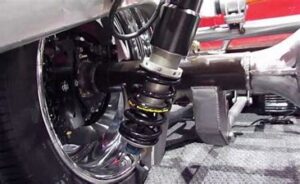Your car is a dependable travelling companion as well as a means of transportation. Like any friend, though, it might occasionally give away signs when something isn’t quite right. The torque converter, an essential part tucked away in your automatic transmission system, is one thing you should keep an eye on. The torque converter ensures a smooth and effective flow of power between the engine and transmission; think of it as the traffic officer for your car’s power distribution system. Now, the torque converter can encounter difficulties, much like any other diligent person, which could result in problems that could impair your driving experience.
Our goal with this post is to help you learn how to tell if torque converter is bad. We’ll solve the riddle of locating a troublesome torque converter, from odd noises to performance shifts. In conclusion, you will have the understanding necessary to recognize the signs your dependable car is sending that its torque converter may require some maintenance. Let’s begin the process of understanding your car’s language so that you can drive more smoothly for many kilometres to come.
Table of Contents
Understanding Torque Converter In Your Car
Before we delve into the specifics of how to tell if torque converter is bad. Firstly, we’ll see what is a torque converter in your car. An essential part of automatic gearboxes in automobiles is the torque converter, which is vital to the transfer of power. Think of it as an intelligent go-between for the engine and the transmission that makes sure your car runs smoothly. This is how it operates: The engine of your automobile produces power when it is moving, but in order for the car to move, the engine must transfer this power to the wheels. This transfer is facilitated by the torque converter’s special fluid-based mechanism. It runs on the fluid coupling principle, which permits the engine to continue functioning even while the car is not moving.

When you’re stuck in traffic or at a stoplight, this feature comes in quite helpful. The impeller, turbine, and stator are the three primary components of the torque converter. Transmission fluid flows because of the impeller’s drive from the engine’s crankshaft. The power required to move the car forward is transferred by this fluid to the turbine attached to the transmission. Through the effective rerouting of fluid, the stator contributes to increased efficiency by optimizing the torque converter’s performance. To put it another way, the torque converter makes sure that the power produced by your car’s engine is transferred to the wheels smoothly and efficiently, enabling easy and comfortable driving.
How To Tell If Torque Converter Is Bad In Your Car: Simple Steps
A car can easily transport you from place A to point B, much like a reliable companion. However, it may give a hint when something is wrong, just like any friend. The torque converter, a vital component in the automatic transmission industry, is one culprit that is frequently disregarded. Now let’s take some easy procedures to determine whether the torque converter in your car is acting correctly or not.
Step 1: Odd Sounds
Typically, your car runs smoothly, but if strange noises start to occur, especially when it’s in gear, it may be your torque converter trying to alert you to anything. A whirring sound, grinding, or even a definite “whump-whump” should be heard as these could indicate problems.

Step 2: Shifting Gears
Envision yourself riding a bike when all of a sudden the chain comes loose. A malfunctioning torque converter in a car might have a similar impact. The torque converter may be slipping, signaling a problem that has to be fixed, if your automobile is revving but not accelerating as it should.
Step 3: Rough Or Delayed Shifting
Shifting gears smoothly is like to a dance with a good routine. The torque converter may be off kilter if your car begins to stutter during gear changes, jerking or hesitating. Any uneasiness when your automobile accelerates or changing gears should be taken seriously as it may indicate a problem.
Step 4: Transmission Overheating
Similar to humans, cars dislike overheating. An issue with the torque converter may cause the transmission to overheat. It may be time to examine the torque converter if you see your temperature indicator beginning to creep into the danger zone.
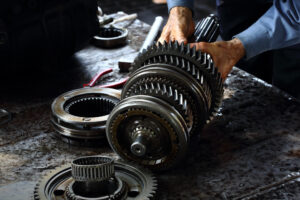
Step 5: Inattentive Conduct
Does it feel like your car is disregarding your commands and is moving slowly? A torque converter that isn’t working properly can make your car feel unresponsive and uncooperative. Should applying pressure to the gas pedal not result in the anticipated acceleration, it could be the fault of your torque converter.
Step 6: Burnt Fluid Or Strange Smells
The fragrance of an automobile can also reveal a lot. A struggling torque converter may be indicated by a burning smell or discolored, foul-smelling transmission fluid. Burned fluid calls for further investigation since it suggests overheating and possible damage.
Step 7: Examine The Engine Light
Not to mention, the check engine light on your car may indicate that an SOS has been sent. Don’t disregard it! The best course of action is to have your automobile checked out since a damaged torque converter is one option among many others.
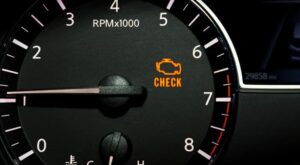
Therefore, by following these easy procedures, you can figure out whether the torque converter is having problems by decoding the signals from your car. Your car is a trusted friend that can be kept operating smoothly on the road with routine checkups and timely attention to these warning flags.
Common Causes Of Torque Converter Issues In Your Car
The torque converter in your automobile works tirelessly to transmit power between the engine and transmission so that you can keep driving. It is a silent hero. But like any hero, it has difficulties. Knowing the typical causes of torque converter difficulties will help you identify possible issues early on and take appropriate action to keep your car running smoothly.
1. Overheating:
Overheating is a common source of problems with torque converters. The torque converter in your car may get damaged if the transmission fluid gets too hot. Prolonged stop-and-go traffic, heavy towing, or low transmission fluid levels can all cause overheating. Maintaining the health of your torque converter and preventing overheating can be accomplished by routinely checking and changing the gearbox fluid.
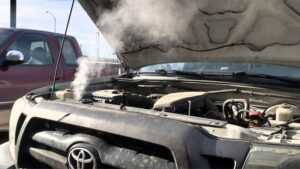
2. Fluid Pollution:
Your torque converter may suffer greatly from contaminated transmission fluid. The internal components of the converter may experience wear and tear due to dirt, debris, or metal particles in the fluid, which could result in performance problems. To prevent fluid contamination and prolong the life of your torque converter, fix leaks as soon as you find them and do routine maintenance to keep your transmission fluid clean.
3. Used Handbags:
Clutches within the torque converter are in charge of engaging and disengaging the various converter components. These clutches may wear out over time, which will affect how smoothly the converter transfers power. Replace worn clutches before they cause more serious torque converter issues by having your transmission serviced on a regular basis and taking care of any slipping or difficult shifting symptoms.
4. Broken Needle Rollers:
Damage to the needle bearings is another frequent cause of torque converter problems. The interior components of the converter are supported in their rotation by these tiny bearings. Unusual noises, like whining or grinding, can occur when they wear out or get damaged and indicate problems with the torque converter. Frequent inspections and quick attention to any strange noises can help identify needle bearing problems before they become more serious.
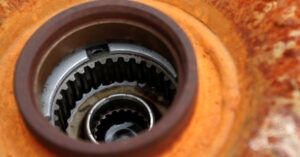
Therefore, torque converter is a key component in the complex dance of your car’s mechanical parts. You can extend the life of this crucial part by being aware of and taking care of frequent causes of torque converter problems, including as overheating, fluid contamination, worn clutches, and damaged needle bearings. You can maintain your torque converter and your automobile in excellent shape for future smooth rides by doing routine maintenance, driving carefully, and acting quickly when problems occur.
Solutions To Address Torque Converter Problems
If you find that there is a problem with your car’s torque converter, you don’t have to freak out. To put everything back on track and guarantee a smoother ride, there are easy fixes that may be implemented. Let’s dissect these solutions into simple actions that you can follow:
Step 1: Replace The Transmission Fluid And Check It
Your torque converter depends on its transmission fluid to survive. Make sure it is at the proper level and does not appear burned or hazy. It’s time for a change if it does. Numerous torque converter problems can be avoided with routine fluid checks and prompt replacements.

Step 2: Quickly Address Leaks
A leaking torque converter can be problematic, much like a dripping faucet can signal more serious issues. Look under your car for any reddish-brown puddles. As soon as you discover a leak, have it rectified. By fixing leaks, fluid loss is avoided and the torque converter’s correct operation is preserved.
Step 3: Fit A Cooler For The Transmission
The enemy of a torque converter is overheating. By regulating temperature, a transmission cooler can assist keep the torque converter from overheating and prolong its life. It’s similar like pouring a cool, revitalizing drink into your car’s transmission.
Step 4: Conduct Routine Maintenance Inspections
Regular examinations are comparable to an automobile’s health check. Make sure that as part of regular maintenance, your torque converter is examined. Early detection of any problems helps prevent later, more serious complications.
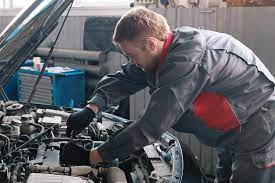
Step 5: Dealing With Polluted Water
A warning sign is transmission fluid contamination. It is imperative that you take immediate action if you see debris or particles in the fluid. Maintaining the health of your torque converter can be achieved by replenishing the fluid and flushing the gearbox system.
Step 6: Take Care Of Overheating Problems
Your car’s torque converter may suffer if it runs hotter than usual. Make sure the cooling system is operating properly by checking it. Overheating difficulties might be caused by malfunctioning cooling fans or radiators, so take quick care of these.
Step 7: Get Expert Assistance
Even with the best of intentions, torque converter issues can occasionally continue. It’s time to seek the advice of a qualified mechanic if you’ve attempted the preceding solutions and the problems still exist. They are able to conduct a comprehensive diagnosis and suggest the best line of action.

Therefore. these easy methods will help you fix torque converter issues and maintain the smooth operation of your vehicle. It will be a more pleasurable driving experience and a happier, healthier torque converter with routine maintenance and quick treatment to any problems that may occur.
Conclusion:
In conclusion, now that we’ve seen how to tell if torque converter is bad in your car. We hope you can avoid more serious auto problems later on by listening for warning indications of a failing torque converter. Red signals such as strange noises, slipping gears, or poor acceleration should not be disregarded. Do not hesitate to seek the advice of a qualified mechanic if you suspect a problem. Faster resolution of torque converter issues guarantees a more comfortable ride and stops additional harm to your vehicle’s gearbox. You can ensure many more kilometers of trouble-free driving ahead of you by keeping your car in excellent condition and being aware of the warning signs and acting quickly.
![You are currently viewing How To Tell If Torque Converter Is Bad In Your Car? [Explained]](https://hydraulicsuspension.com/wp-content/uploads/2024/01/how-to-test-a-torque-converter-before-installing-2.jpg)

